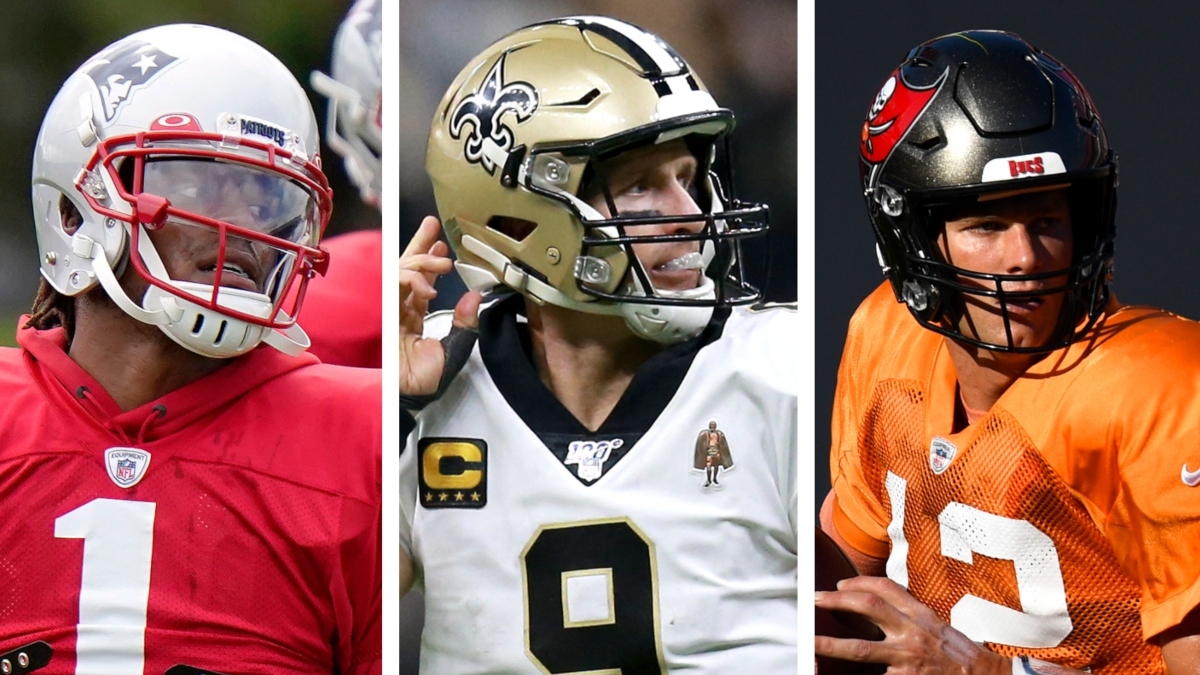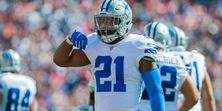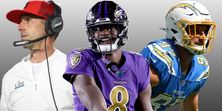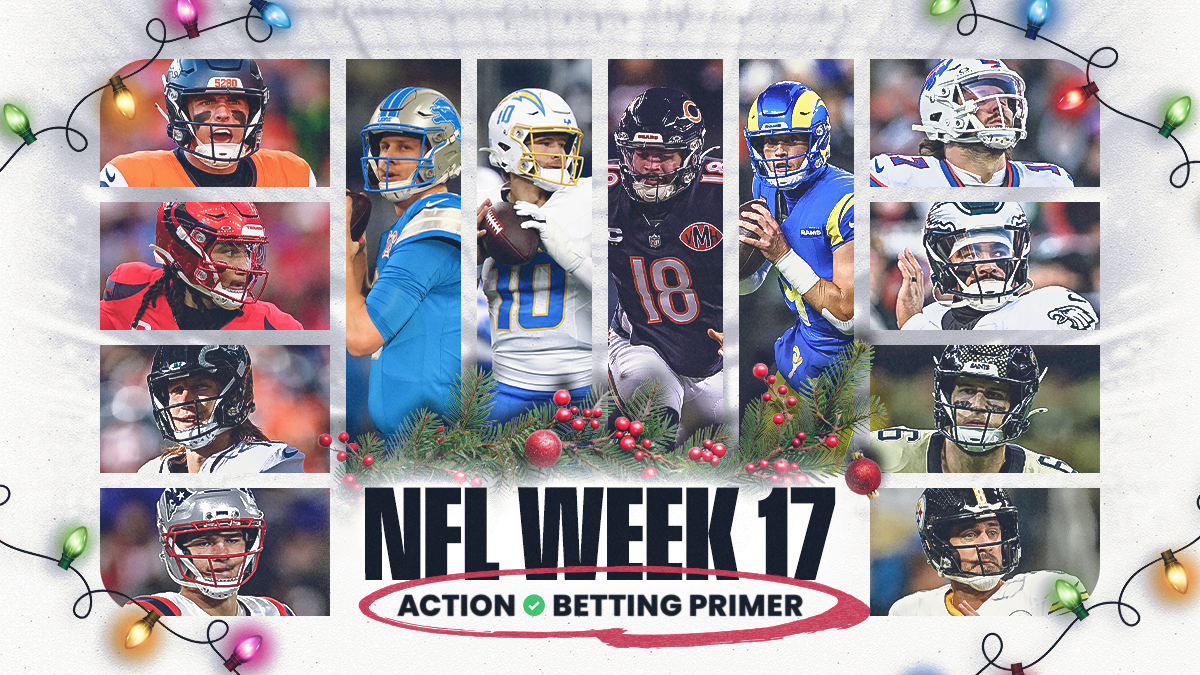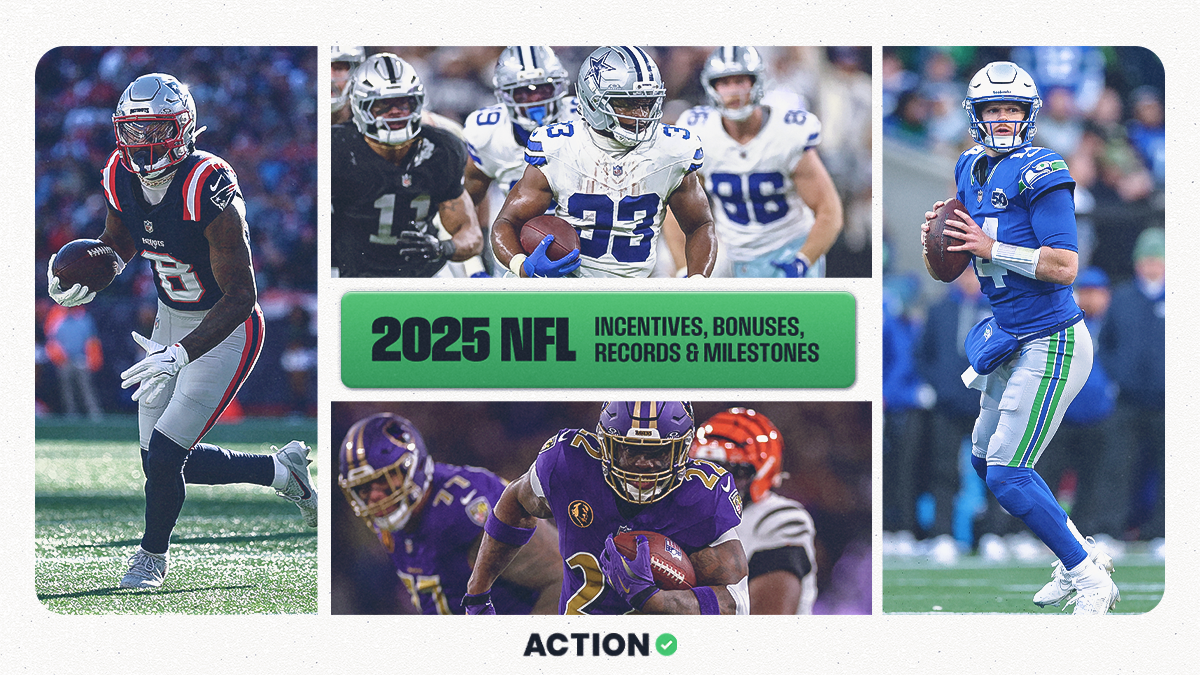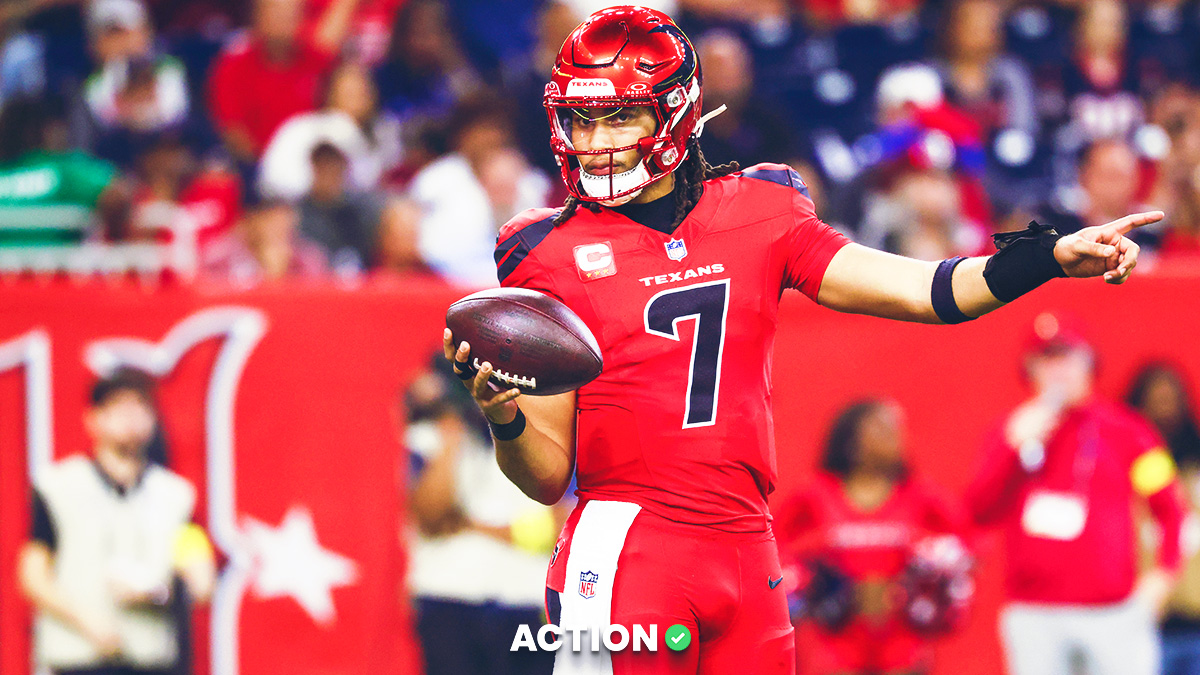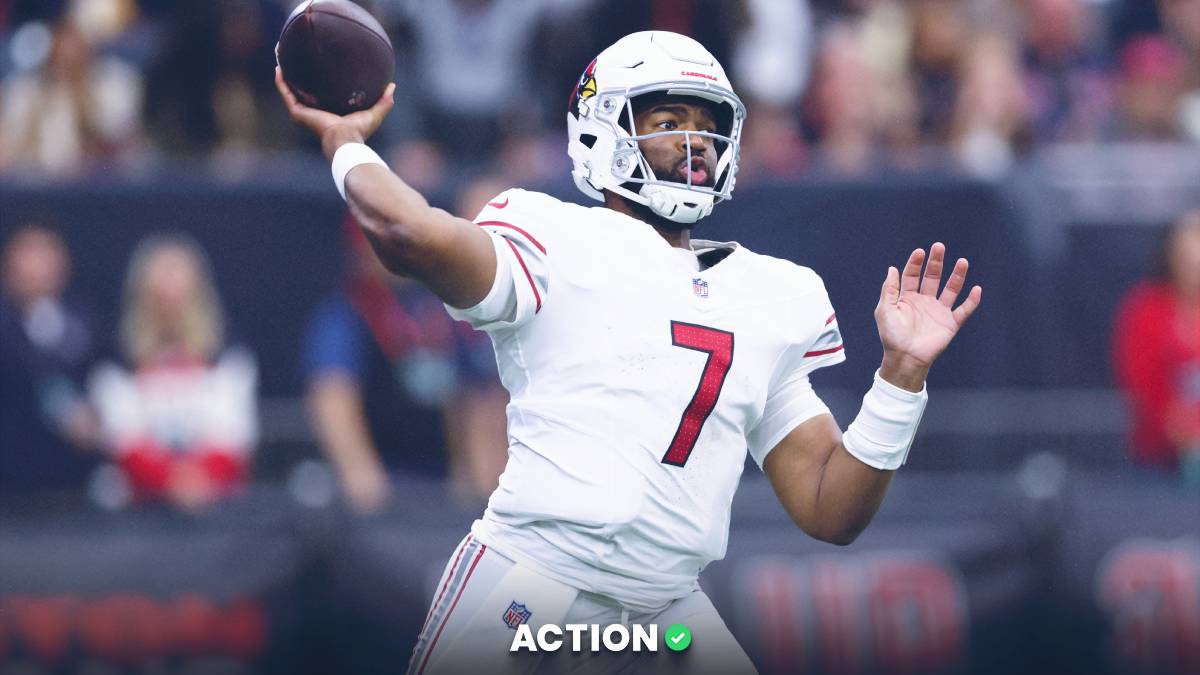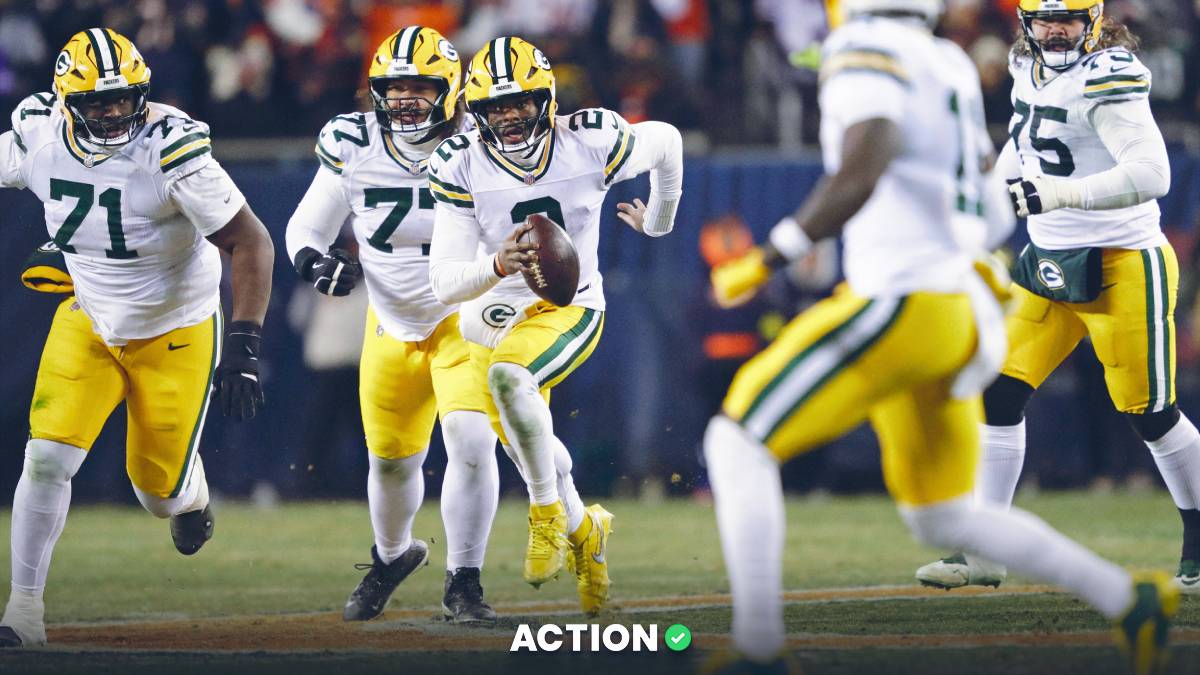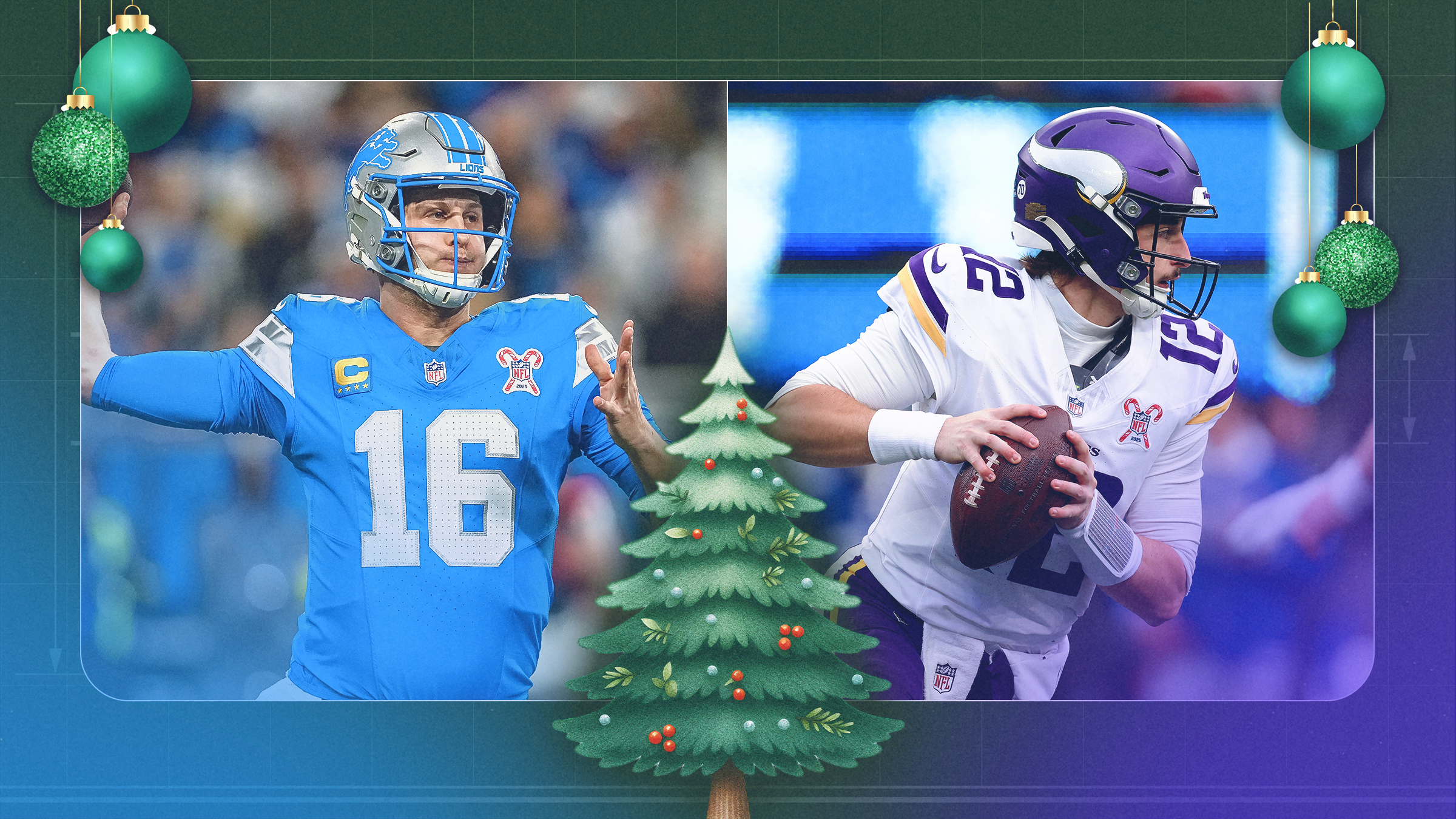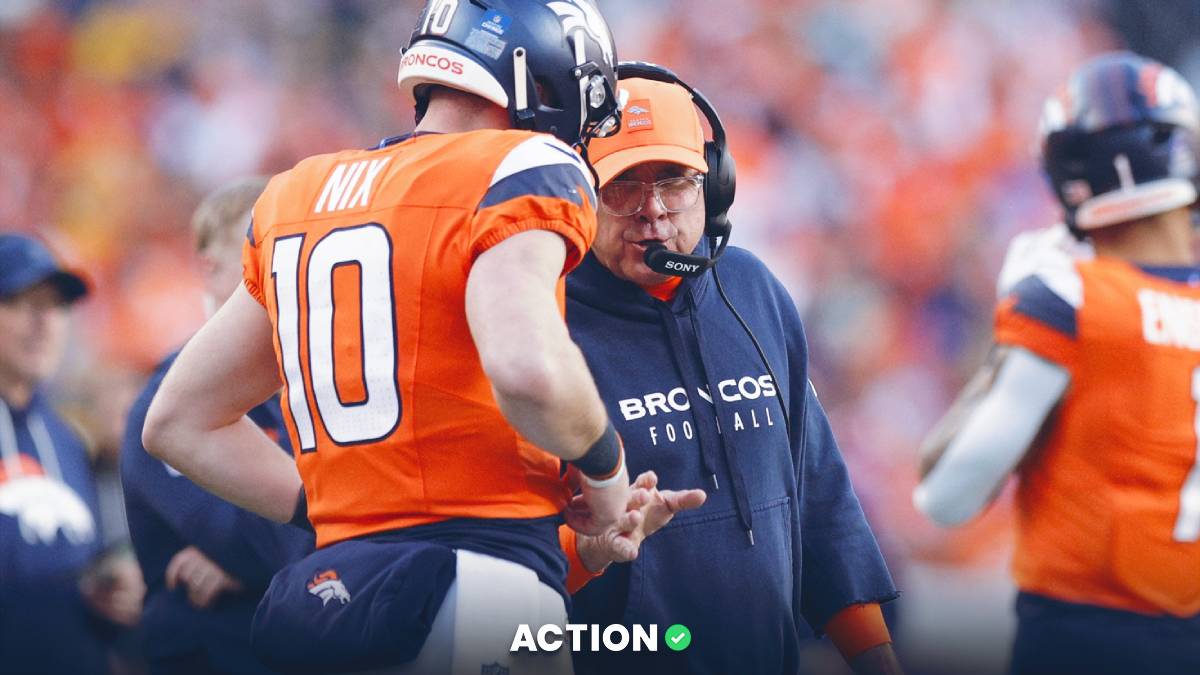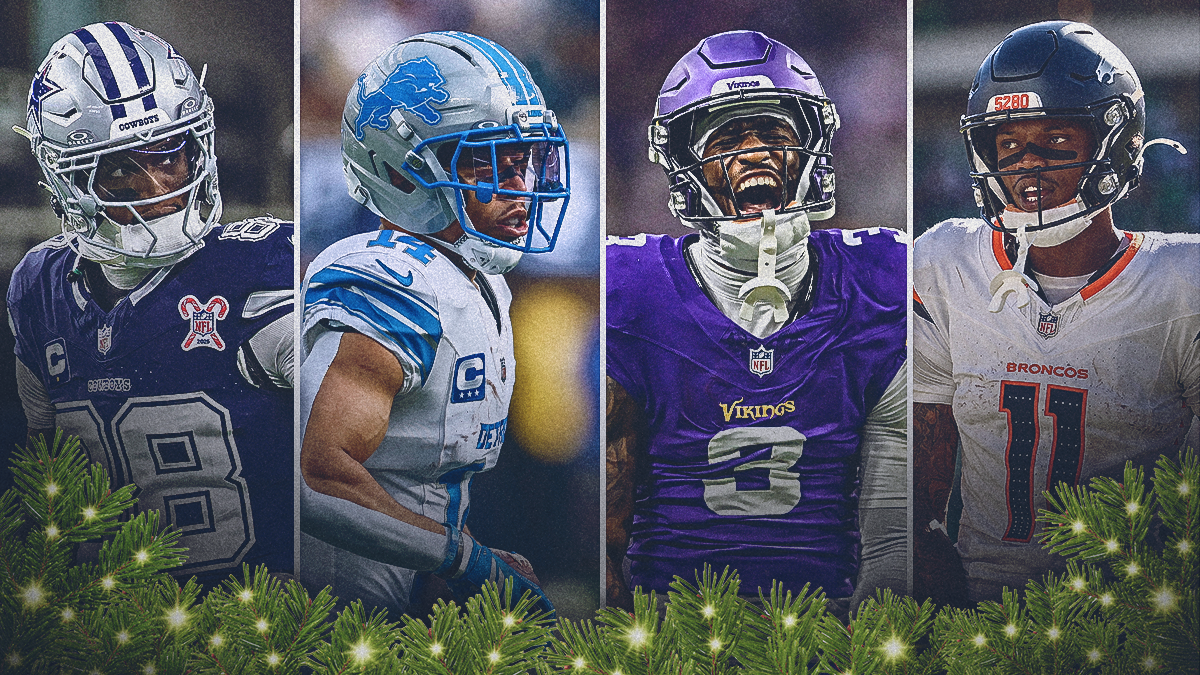The Ghost of Peyton Manning didn't haunt us like it should have.
Manning, you may recall, was abjectly awful in his final NFL season, completing just 59.8% of his passes for 6.8 yards per attempt, a 9-to-17 touchdown-to-interception ratio and, most damning of all, a benching in favor of Brock Osweiler.
The warning signs were there: Not only was Manning entering his age-39 season, but he closed out 2018 with an un-Manning-like 76.5 passer rating and 4-to-6 TD-INT ratio over his final four regular-season games and a playoff loss to the Colts.
Of course, you may also recall that the Broncos won the Super Bowl that year! Despite Manning's poor play — and a team with a Pythagorean win total of only 9.7 — he reclaimed the starting job and the Broncos went 12-4 and won it all, largely in spite of Manning's precipitous decline.
And so we learned nothing.
But entering the 2020 season, those unlearned lessons may come back to teach us the hard way.
Because quarterbacks tend to be effective later into their careers, and usually remain starters right up until the end, their decline (or demise) can be rather abrupt. What initially looks like it could be written off a as a small-sample blip can quickly turn into Brock Osweiler relief appearances.
Sometimes, the warning sign comes in the form of an injury — even though Brett Favre was the best QB in the NFL at age 40, we should have probably known his next season would be the end after the way he went out in the NFC Championship Game. Other times, there are no warning signs other than age, with an injury and the end coming simultaneously: Carson Palmer didn't necessarily look like a QB nearing the end at age 37 in 2016, but after breaking his arm seven games into the 2017 season, he decided to call it quits ahead of 2018.
Heading into 2020, there are five quarterbacks who I consider at a high risk for falling off the QB cliff: Tom Brady, Drew Brees, Philip Rivers, Ben Roethlisberger, and Cam Newton.
As it so happens, all five start for teams who are among the frontrunners to represent their respective conference in Super Bowl LV. Each of their teams has a projected win total of at least 9, with a collective average of 9.6 projected wins per Vegas' odds.
While all of these QBs may not fall off the deep end this year, history tells us that it's unlikely that none of them do, either. In a year in which most expect COVID-19 to be responsible for much of the uncertainty, good old fashioned veteran QB decline could end up playing the largest role.
Let's run through the risk factors and likelihood of a drop-off for each of the at-risk QBs.
NFL QB Cliff Risk Ratings
Click on a risk level or quarterback's name to skip ahead.
Philip Rivers | |
Ben Roethlisberger |
HIGH RISK
Cam Newton, Patriots: Age 31
Newton is younger than the typical QB cliff candidate, but such is the reality for a quarterback who has accrued as much mileage as he has on the ground.
Newton's 4,806 rushing yards make him the all-time leader among quarterbacks in rushing yards through their age-30 season. Russell Wilson is also on that list, but we've seen the careers of the other six of the top eight run their course, and only Donovan McNabb was able to play close to a full season at age 31 (he started 14 games) while producing at a similar level to what he'd done in the past.
The other five struggled with injury, ineffective play, or both:
- Michael Vick: Vick’s age-31 season was interrupted in Week 10 by broken ribs. At the time, he was 3-6 with an 11-11 TD-INT ratio and 0 rushing TDs for the supposed "Dream Team." He did come back to lead the Eagles to an 8-8 record, but would never be as effective again, posting an 8-14 record over 22 starts from age 32-35.
- Randall Cunningham: Cunningham posted five-year lows in completion rate and yards per attempt in his age-31 season, failing to lead his team to a winning record in his starts for the first time in nearly a decade. He appeared in seven games (four starts) the next season before retiring at age 32, then returned at age-34. At age-35, he climbed back from the bottom of the cliff to have a magical 13-1 season with the Vikings, but otherwise failed to start more than six games in a season on his comeback stint.
- Steve McNair: After posting a 6.0% TD rate and 8.0 yards per attempt at age 30, he never again finished with a TD rate above 3.7% or a yards per attempt figure above 6.6. He started eight games in his age-31 campaign and averaged 11 starts from age 31-34 before retiring.
- Kordell Stewart: Like Newton, Slash switched teams for the first time after his age 30-season, going from Pittsburgh to Chicago. In his age-31 season, he was benched mid-season due to an injury — or ineffective play, depending on who you ask — and ended up with a 2-5 record over seven starts, which would go down as the final starts of his pro career.
- Daunte Culpepper: As an ominous sign for Newton, Culpepper's cliff coincided with an injury-shortened final year with the franchise that drafted him, going 2-5 in seven starts for the Vikings before tearing up his knee. Newton's Lisfranc injury shouldn't be considered as serious as Culpepper's torn ACL/MCL/LCL, but Culpepper does provide a glimpse into Cam's potential fate if his -2 rushing yards in two games last season was more than a small-sample blip: Culpepper went from averaging 30.6 rushing yards per game with the Vikings through his age-28 season, but post-injury and upon switching franchises, he went 2-17 as a starter over the next four years while compiling only 176 rushing yards total. From age-31 on, he went 0-10 as a starter.
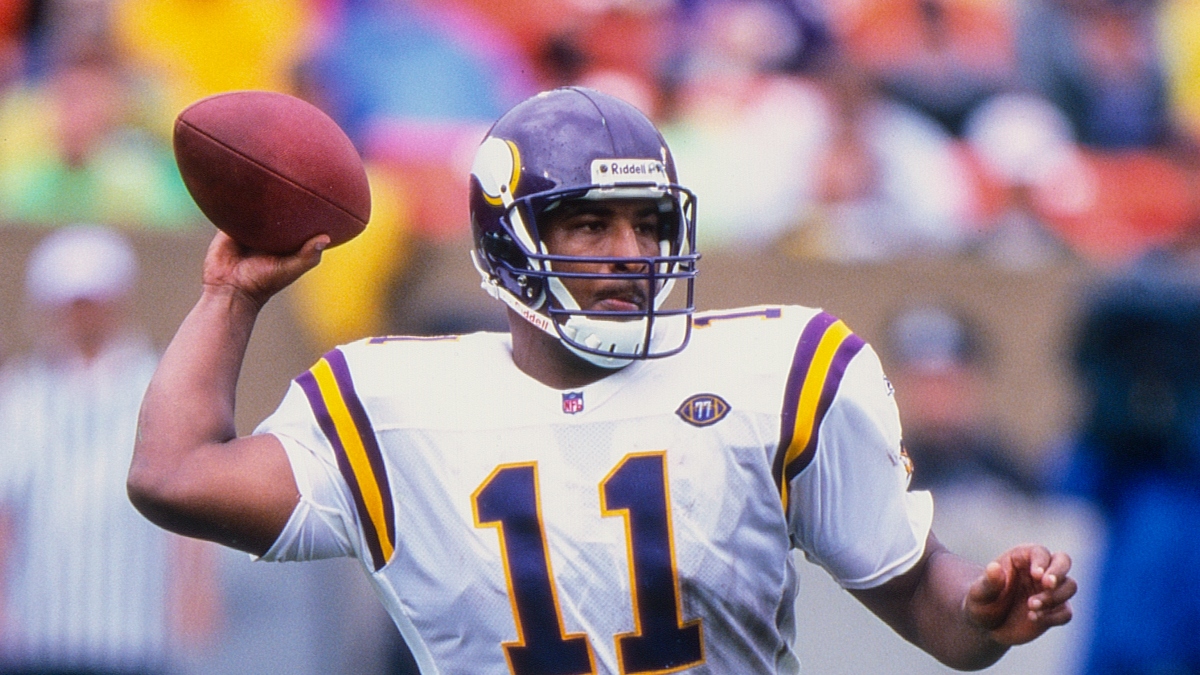
Remember, Cam doesn't just have potential age and injury-related decline working against him — he also has the "Is it more than a small-sample blip?" factor to worry about: He's 0-8 in his last eight starts. Over his last five, he's averaging 6.3 yards per attempt with two TDs and seven interceptions.
And even before his rushing production became non-existent with -2 yards in two games last season, he posted just 24.3 yards per game over the first six games of his losing streak and final six games of 2018, which is only two-thirds of his career average (38.4) — this coming when he was hampered by a shoulder injury rather than anything involving his legs. And even if that shaky play was due to injuries which are now healed, history tells us that uneven play brought about by poor health tends to foretell of more uneven play and more poor health, even if the exact injury differs the next time around.
Back in March, I wrote about how fun it would be if Cam signed with the Pats. And then nothing happened … for months. By the time the Pats finally signed Cam, I was more baffled than excited.
Why would the franchise wait until this late to bring him in if they truly intended for him to start?
Why didn't any other team scoop him up sooner?
Training camp provided more questions than answers.
Did Cam really "win" the job, or did Jarrett Stidham's leg injury truly play a part?
Was Bill Belichick engaging in classic gamesmanship he never could with Brady as the obvious starter by entertaining talk of a platoon, or was he serious?
Was there something to Belichick announcing Cam as the starter to the team while not giving him the same stamp of approval to the media?
Then there are the questions about the offense.
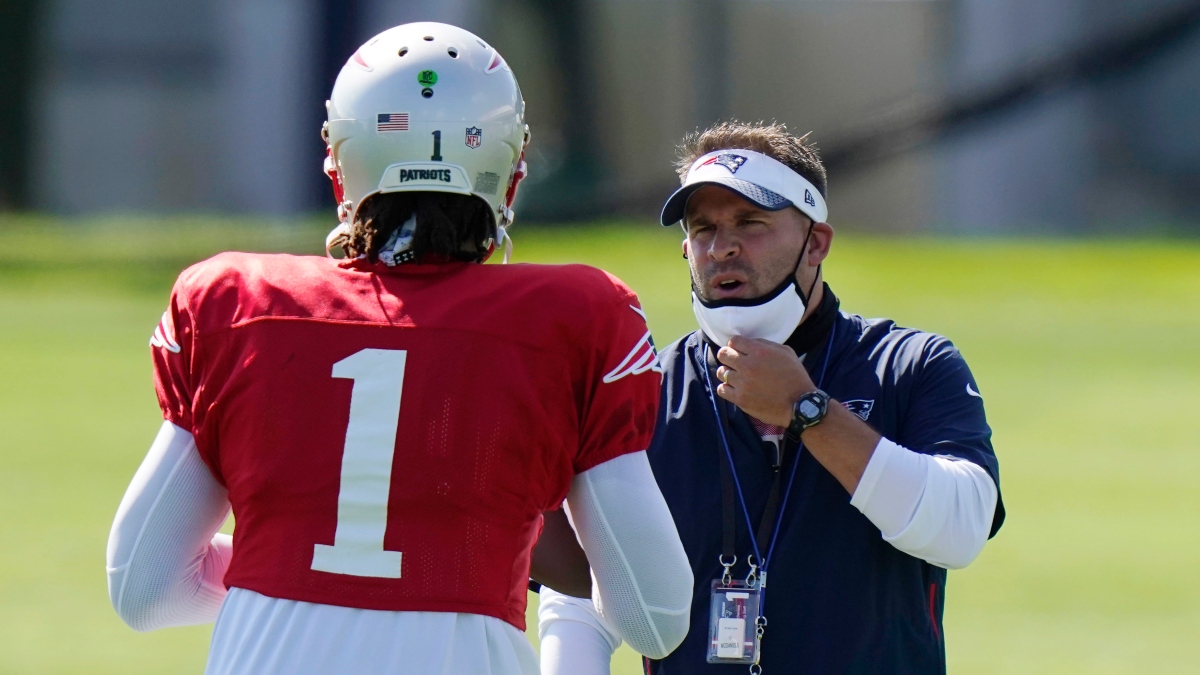
Offensive coordinator Josh McDaniels is highly regarded, but his track record with non-Brady quarterbacks isn’t nearly as strong as with the future Hall of Famer. With Brady, McDaniels' offenses have never finished lower than seventh in points. Without Brady, McDaniels' offenses average a 20th-place finish, and all four of his non-Brady seasons account for the four worst of his career in that regard.
Again, this begs the question of why Newton wasn’t brought in sooner.
And what if the Patriots receiving corps was entirely to blame for Brady’s decline last season? Aside from a couple of rookie tight ends — a position that notoriously takes longer to develop than most — the pass-catching corps will be largely the same. And last season's struggles all came with Julian Edelman available for all 16 games. That’s something that can’t be taken for granted this year, considering Edelman is entering his age-34 season and has played in all 16 games just three times in 11 pro seasons.
If Brady, who owns a 63.8% career completion rate, struggled to complete passes to this group, then it’s not looking good for Newton, whose mark sits 4.2 points lower at 59.6%.
With all of these factors in mind, it's hard to envision there’s a high probability within Cam’s range of outcomes where "Cam is effective" and "Cam is healthy for a full season" intersect. Given the state of the offense, Cam’s success is seemingly more tied to his rushing ability than ever, which would in turn increase the probability of him getting hurt.
Maybe the entire league blew it on not picking up Cam before the Patriots swooped in at the 11th hour. Or maybe they didn't want to be there when he fell off the cliff.
Ben Roethlisberger, Steelers: Age 39
Big Ben checks all of the quarterback cliff boxes.
Small-sample blip? Check.
In his two games last season, he went 35-of-62 passing for 351 yards (5.66 YPA) with no touchdowns and one interception, good for a dismal 20.9 mark in ESPN's Total QBR. Throw in his final game of the 2017 season, and he’s officially averaging 5.96 YPA with one TD on 107 throws in the post-Antonio Brown era.
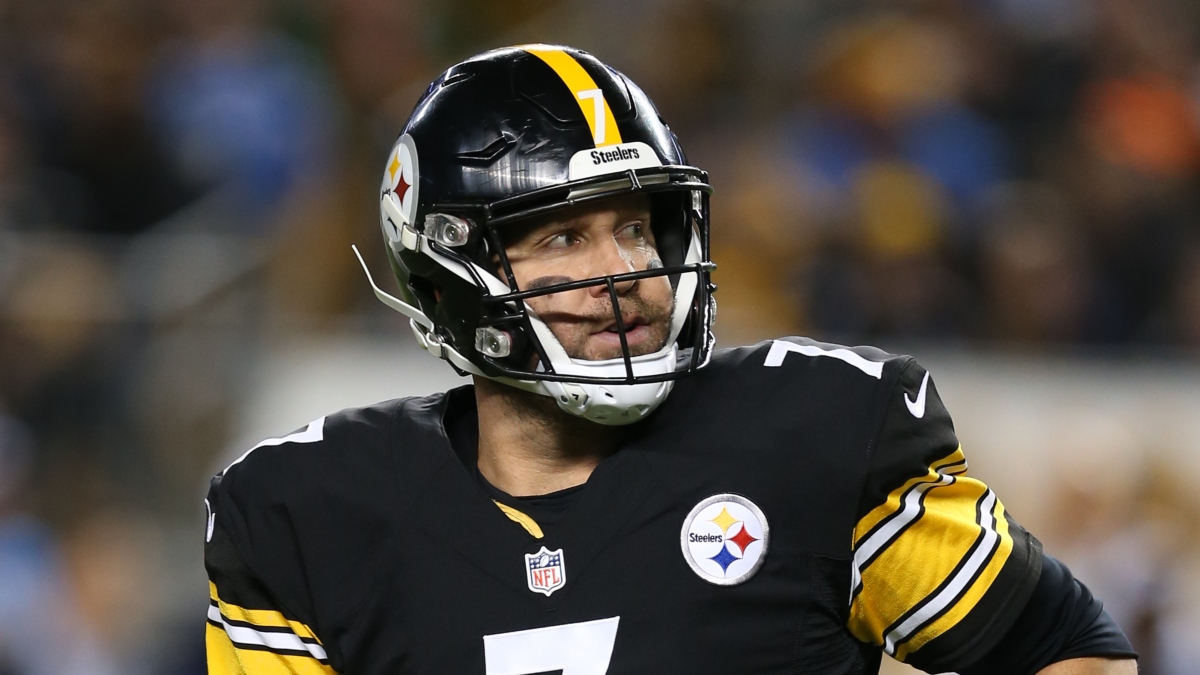
Potentially devastating injury that could have a major impact on his arm strength? Check.
Roethlisberger underwent surgery to repair three tendons in his throwing arm. According to Ben, it was "not Tommy John" surgery but "somewhat similar and very serious" and one that he believes "no quarterback has ever come back from."
Of course, Big Ben made sure to quiet the concerns with the obligatory "it feels really, really good" back in August. He also added that he'd been throwing more this offseason than he usually does … and that he'd be on a pitch count in camp.
Wait, what?
Nobody push Big Ben because he's. Close. To. The. Edge.
MODERATE RISK
Tom Brady, Buccaneers: Age 43
It's hard to imagine Brady's incomparable run ever coming to an end.
But then again, it was hard to imagine Brady even being subpar for any amount of time that could even be considered a "stretch" — maybe you'd get a few games of subpar Brady, just enough for some brave journalist to dig their grave by questioning Brady's status as the starter and create legendary Bill Belichick press conference moments, but eventually Angry Tom would come out, and all would be right with the world.
But for the last 10 weeks of 2019, Brady was bad.
From Week 7 through the playoffs, Brady completed just 57.8% of his passes and averaged 5.98 yards per attempt.
Brady finished the year with his lowest TD rate ever (3.7%), his fewest yards per attempt since 2002 (6.6), and a passer rating under pressure of 51.8, which ranked 34th of 35 qualifiers, according to Pro Football Focus.
It all sure made Tom angry, but Angry Tom was no longer synonymous with anything remotely resembling good quarterback play.
Of course, it's easy for analysts — yours truly included — to chalk up the drop-off to New England's separation-averse receiving corps. After all, a huge chunk of Brady's misfire's were throwaways — he led the league with 45.
At the same time, we may just be ignoring the obvious.
We know a quarterback of Brady's age is likely to fall off a cliff at some point, and in 2019, Brady's play … fell off a cliff.
Maybe the acquisition of Mohamed Sanu was subtraction by addition — the wide receiver averaged 4.4 yards per target (4.4!) — but Brady was fine for the first six weeks of the season: He had a 65.3% completion rate and averaged 7.8 yards per attempt, and then … cliff.
Absence of evidence should never be confused with evidence of absence, but we also have to take into account that the number of quarterbacks to start more than six games at age 43 or later is precisely zero. The number of quarterbacks to do so at age 42 was also zero, until Brady — but that was pre-cliff Brady.
How long will he continue to defy Father Time?
Philip Rivers, Colts: Age 38
Rivers' age-38 season was one of exasperation — a 20-interception disaster that saw the Chargers muster only half as many wins as their preseason win total.
It wasn't just that Rivers compiled a 5-11 record and threw 20 picks, but his recklessness didn't even pay off with more touchdowns. He posted a career-low 3.4% TD rate, which is pretty hard to fathom given the talented players he was throwing to: Keenan Allen, Hunter Henry, Austin Ekeler, Mike Williams and Melvin Gordon.
One reason Jacoby Brissett struggled last season was due to his deficiencies in the downfield passing game — his 51.1 rating on deep passes ranked 33rd in the league. Well, Rivers ranked just one spot better, clocking in at 59.9.
As Rivers has aged, the eye test says Rivers’ mechanics are getting clunkier, and his arm strength is waning. But it also shows a quarterback who can go long stretches with seemingly no regard for his newfound limitations: Rivers threw 20 picks last year, but Football Outsiders’ Adjusted Interception metric says that number should have been 26 after accounting for drops by defenders.
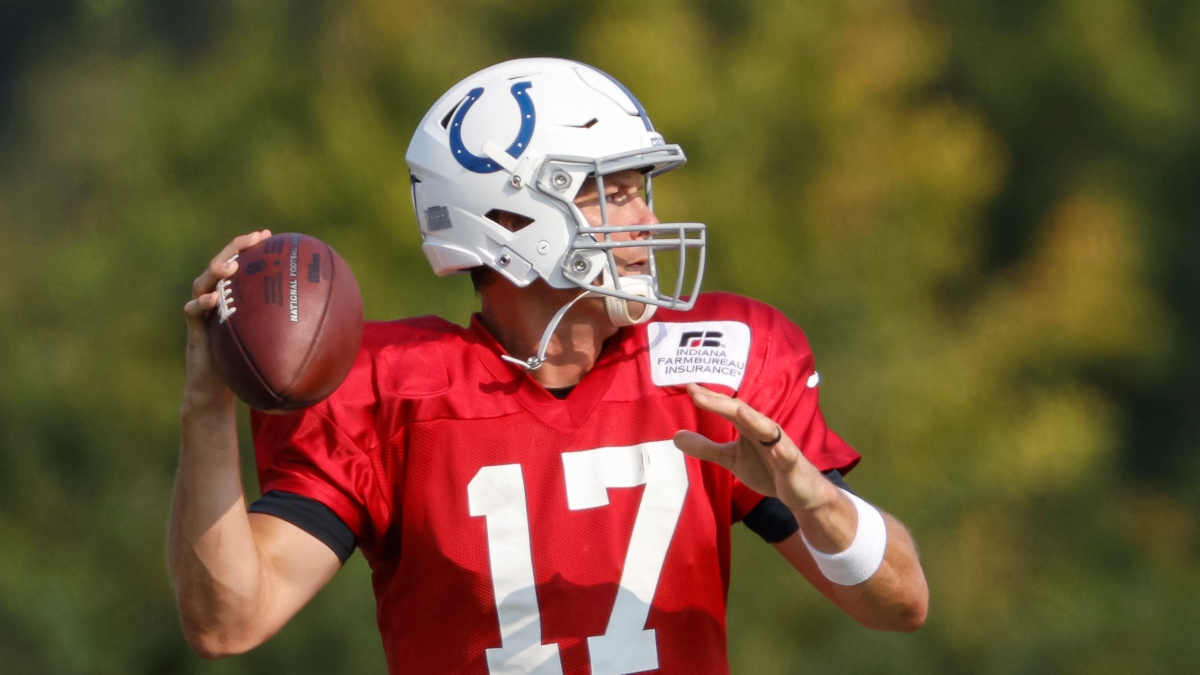
Rivers was lucky to throw fewer than one pick per game in 2018 and 2017 as well, as his adjusted interceptions were 16 in each of those two seasons, which were bookended by a league-leading 21 real and 19 adjusted interceptions.
Rivers has been in a gradual decline for years, but with each passing year comes an increased risk of him face-planting at the bottom of the cliff.
Since the merger, there have been 28 quarterbacks to make at least one start in a season at age-39 or older, and only three (Brady, Brees and Brett Favre) have won at least nine games while only four (Brady, Brees, Favre and Warren Moon) tossed 20 or more touchdown passes.
LOW RISK
Drew Brees, Saints: Age 41
Unlike the other quarterbacks on the cliff, Brees' cliff status is almost entirely due to age rather than a performance drop-off. What looked like the potential beginning of the end in 2018 — 6.8 yards per attempt and a 7-to-5 TD-to-INT ratio over the last six games of that season — gave way to a 27-to-4 ratio and 7.9 yards per attempt season in 2019.
But here's why the 41-year-old has to be in this conversation: He’s been playing QB like every deep ball could be his last. Brees threw downfield just 8.2% of the time in 2020, 35th of 36 qualifiers.
This hasn’t been a problem, yet — Brees has made up for the lack of deep balls with record-setting efficiency on high-percentage passes. But remember, QBs at his age tend to fall off a cliff, so there could be a finer line than we think between "record-setting" completion rates and ineffective quarterback play. This is, in effect, what led to Manning’s precipitous decline — his arm was never the same after his neck surgery, but in his final season, his elite intelligence and quick release was no longer able to offset his declining ability to deliver the ball with zip.
Perhaps we’re still a year or two away with Brees, but it’s something to monitor.
It’s also interesting that the Saints chose to move on from a backup who is similarly vertically challenged in Teddy Bridgewater to one who is the exact opposite in Jameis Winston, who threw deep at the fourth-highest rate in the league last season.
Honorable Mentions
Aaron Rodgers, Packers (Age 37): Rodgers did post some pretty bad numbers over the second half of 2019 — fewer than 6.0 YPA with Davante Adams — but for the most part, he’s been marred in a half-decade stretch of consistently being not the guy he used to be.
Over that span, his play his mostly stayed the same, while the supporting cast gone by the wayside. And judging by their offseason moves, the Packers plan to run on approximately 99.9% of their plays, so Rodgers’ risk of an injury-related cliff drop via his usual strained calf or broken collarbone seem lower than ever.
Ryan Fitzpatrick, Dolphins (Age 38): Fitz has been so up and down his entire career that a sudden decline wouldn't be anything new. You do wonder how bad Fitz would have to be for him to actually be benched by new offensive coordinator Chan Gailey, who has coached three times in the past eight years and used Fitz as his starter in at least 14 games in each of those seasons.


